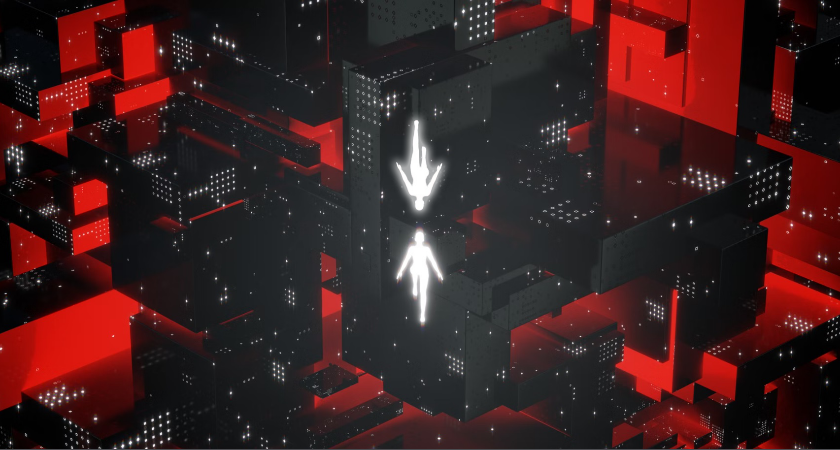Catchy and futuristic. That’s what the term “Digital Twin” often sounds like to people. It is powered by technologies such as AI, VR, AR and IoT. Think of highly complex virtual models in the digital realm that help you leap from the “looking glass” and directly into the action. That said, this still doesn’t explain what a digital twin is or what they can do. Here’s another description. A digital twin is a virtual representation of entities and their interactivity in a reality. Let’s break this down further:
Virtual Representation
Through the use of VR technology, a virtual representation is a replica of the physical world in digital form. It is a 3D model that stores data based on your input and requirements. It is not a static simulation but a full representation with live feeds of every sensor it contains in real-time. This digital simulacrum reproduces real-life scenarios using specific definitions and parameters. If you turn the virtual representation on, it will perform the tasks it was supposed to do. There is nothing extra, unique or unusual. It runs parallel to the real thing.
Entities
Entities can be anything. For living beings, it can be a person, an animal, an organ or a complete digestive tract. As for non-living objects, there are machines, devices, buildings, equipment and processes. From a virtual twin’s standpoint, this includes its characteristics and purpose. Take a light sensor for instance. This entity comprises its shape, function, location and relationship with other devices. Hence, the metadata and properties of a light sensor will be captured by digital twin technology.
Interactivity
A vital aspect of digital twins is the relationship between one entity and another. Its action toward other 3D models helps define a set of rules based on interactivity. This generates data for collection and analytics. Take the same example from above. Once the light sensor does not detect movement in a room, it automatically switches off. In this scenario, the light, sensor and room are individual entities with connected interactivity. This illustrates the context or function of each entity, which can be altered to affect their relationship.
Reality
Entities and interactivity are part of a reality. In the light sensor’s case, they exist in the physical world – where we currently live. With digital twin technology, you generate an alterable virtual environment with the same physical rules and objects, hosting all digital entities and interactivities.
How are digital twins relevant today?
Digital twins are moving away from being a buzzword to practical application. It empowers users to not only understand the present but predict the future. It enables better R&D by gathering large volumes of data from simulated processes. This information leads to excellent insights that help companies with the following:
- Visualize products in use by real users
- Conduct product refinements
- Develop superior designs
- Maintain peak efficiency
- Improve equipment lifespans
- Reduce unexpected downtimes
- Troubleshoot from anywhere in the world
Beyond mechanical objects, digital twin technology is eyeing a living, working organization. Called Digital Twin of an Organization or DTO, it allows business leaders to assess the impact of change on their company in a controlled virtual environment. It can support businesses by doing the following:
- Seamlessly coordinate employees in all departments
- Identify weaknesses or shortcomings
- Provide training and learning opportunities
- Offer insights into current operations
- Examine the risks and costs of adopting new factors
- Plan, prioritize, guide and monitor business goals
What are real-world examples of digital twins?
The Los Angeles Department of Transportation constructed a digital twin of the city’s transportation system to aid decarbonization. It collects rich, real-time status on e-scooters, shared bikes and traffic flow to implement new mobility solutions and strategies in the future.
Tesla creates digital twins of all its cars by collecting data from sensors on vehicles. This allows them to discover defects and predict when failures are most likely to occur. It minimizes the need for owners to send their cars for servicing and maintenance. By doing so, this reduces costs associated with acquiring spare parts, improves user experience and enhances customer satisfaction.
French company Dassault Système introduced its Living Heart Project that gave birth to the SIMULIA Living Heart Human Model. It is a high-fidelity 3D model that mimics a healthy, four-chamber adult human heart including blood flow, electro-mechanical conduction and cardiac tissue simulation. Doctors can study heart defects and disease, and run virtual medical procedures to observe their influences.
Where are digital twins heading to?
The accuracy of virtual models recreated by a digital twin has a panoply of implications for the future. One logical step as this trend takes hold is the enrichment of the metaverse. In fact, this technology is a vital building block of the metaverse. As a shared digital layer of the physical world, the metaverse will be powered by digital twins to enable continuous communication and synchronization between the virtual and physical.
The intrinsic properties of digital twins make it possible for the virtual realm to become reality as it brings us a spectrum of immersive worlds and experiences beyond our imagination. In the future, architects and programmers can collaborate to design and implement high-concept digital universes, transcending the physical world. It will be an exciting time when that happens. Organizations need to start looking into and adopting digital twin technology to represent their entities in order to serve customers in the metaverse. When used correctly, the real world will find itself a new virtual playground filled with boundless digital wonders.

